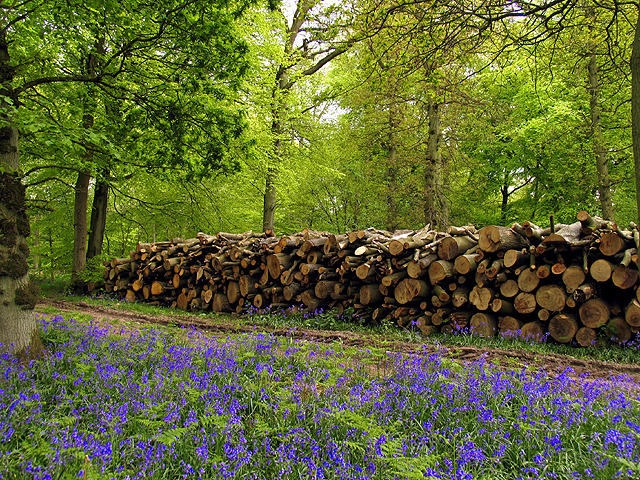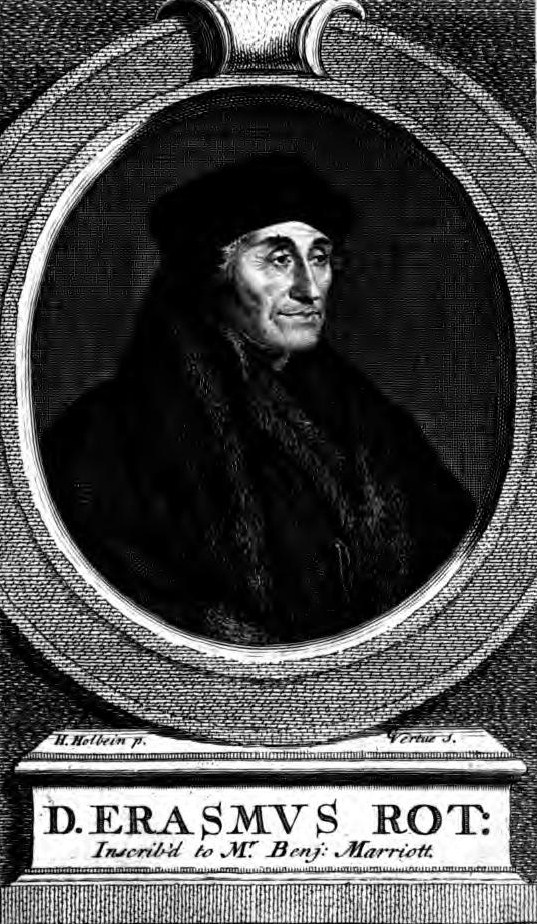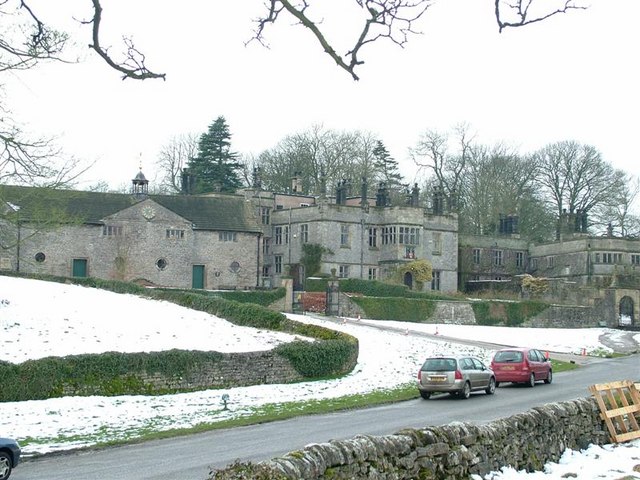|
Richard Graves
Richard Graves (4 May 1715 – 23 November 1804) was an English cleric, poet, and novelist. He is remembered especially for his picaresque novel ''The Spiritual Quixote'' (1773). Early life Graves was born at Mickleton Manor, Mickleton, Gloucestershire, to Richard Graves (1677–1729), an antiquary, and his Welsh wife Elizabeth, née Morgan. Morgan Graves (died 1770) of the Inner Temple, and the cleric Charles Caspar Graves, were his brothers. Graves was educated first at a school run by William Smith, Curate at Mickleton from 1729, and then at John Roysse's Free School in Abingdon (now Abingdon School). Smith's well-read daughter Utrecia later formed part of his life, a relationship he broke off before her death in 1743. Oxford don Graves gained a scholarship at Pembroke College, Oxford, matriculating on 7 November 1732. George Whitefield was a servitor of Pembroke College, and they took their BA degree on the same day in July 1736. In the same year he was elected to a fell ... [...More Info...] [...Related Items...] OR: [Wikipedia] [Google] [Baidu] |
James Northcote (painter)
James Northcote (22 October 1746, in Plymouth – 13 July 1831, in London) was a British painter. Life and work Northcote was born in Plymouth, and was apprenticed to his father, Samuel Northcote, a watchmaker. In his spare time, he drew and painted. In 1769 he left his father's work and set up as a portrait painter. Four years later he went to London and was admitted as a pupil into the studio and house of Sir Joshua Reynolds. At the same time he attended the Royal Academy schools. In 1775 he left Reynolds' studio, and about two years later, having made some money by portrait painting back in Devon, he went to study in Italy. On his return to England, three years later, he revisited his native county, then settled in London, where John Opie and Henry Fuseli were his rivals. He was elected associate of the Academy in 1786, and full academician in the following spring. The ''Young Princes Murdered in the Tower'', his first important work on a historical subject, dates from 178 ... [...More Info...] [...Related Items...] OR: [Wikipedia] [Google] [Baidu] |
Frank Nicholls
Frank Nicholls (1699 – 7 January 1778) was a physician. He was elected a Fellow of the Royal Society in 1728. He was made reader of anatomy at Oxford University when young and moved to London in the 1730s. Life The second son of John Nicholls (d. 1714) of Trereife, Cornwall, a barrister, he was born in London. He was educated at Westminster School, and went to Exeter College, Oxford, where he entered 4 March 1714, his tutor being John Haviland. Besides the classics, he studied physics; he graduated B.A. 14 November 1718, M.A. 12 June 1721, M.B. 16 February 1724, M.D. 16 March 1729. He lectured at Oxford on anatomy, as a reader in the university, before he graduated in medicine. His lectures were well attended, and were mostly devoted to minute anatomy, then seldom taught. He demonstrated the minute structure of blood vessels, showed before the Royal Society experiments proving that the inner and middle coat of an artery could be ruptured while the outer remained entire, and ... [...More Info...] [...Related Items...] OR: [Wikipedia] [Google] [Baidu] |
Mary Townshend, Countess Chatham
General John Pitt, 2nd Earl of Chatham, also 2nd Viscount Pitt and 2nd Baron Chatham, (9 October 1756 – 24 September 1835) was a British soldier and politician. He spent a lengthy period in the cabinet but is best known for commanding the disastrous Walcheren Campaign of 1809. Chatham was the eldest son of William Pitt, 1st Earl of Chatham. He was two and a half years older than his famous brother William Pitt the Younger, the future prime minister. After serving as a junior officer in the American War of Independence, he succeeded his father as Earl of Chatham in 1778. Politically he was a close supporter of his brother during the following decade, leading to his appointment as First Lord of the Admiralty in 1788. Despite overseeing the Royal Navy's victory at the Glorious First of June in 1794, he faced criticism for his handling of the Admiralty and was demoted to the comparatively unimportant post of Lord Privy Seal. Although he continued to serve in William's cabinet, the ... [...More Info...] [...Related Items...] OR: [Wikipedia] [Google] [Baidu] |
Kilmersdon
Kilmersdon is a village and Civil parishes in England, civil parish on the north eastern slopes of the Mendip Hills in Somerset between the towns of Radstock and Frome. It is located on the B3139 between Wells, Somerset, Wells and Trowbridge in Wiltshire. The settlement is recorded in William I's Domesday book and dates back at least 1,000 years; though the core of the village dates from the mid nineteenth century. The parish includes the hamlets of Charlton, South View and Green Parlour. History The name Kilmersdon means 'Cynemaer's Hill'. The parish was part of the Kilmersdon (hundred), Kilmersdon Hundred (county subdivision), Hundred. Kilmersdon is said to be the "home" of the Jack and Jill (nursery rhyme), Jack and Jill nursery rhyme, the fabled hill being recently restored as part of a local Millennium scheme. Immediately adjacent to the newly restored well is Kilmersdon Primary School, which was established (though not in the current building) in 1707. Other amenities i ... [...More Info...] [...Related Items...] OR: [Wikipedia] [Google] [Baidu] |
Ralph Allen
Ralph Allen (1693 – 29 June 1764) was an entrepreneur and philanthropist, who was notable for his reforms to the British postal system. Allen was born in Cornwall but moved to Bath to work in the post office, becoming the postmaster at the age of 19. He made the system more efficient and took over contracts for the mail system to cover England to the borders of Scotland and into South Wales. He bought local stone mines from his postal profits and had Prior Park built as his house to show off the versatility of the local Bath stone, using the old post office as his town house. With the architect John Wood the Elder, the stone he mined was used in the building work for the development of the Georgian city. However, the mines did not consistently make a profit and Allen subsidised them from his postal profits. After his death, he was buried in a pyramid-topped tomb in Claverton churchyard. He is commemorated in the names of streets and schools in the city of Bath and w ... [...More Info...] [...Related Items...] OR: [Wikipedia] [Google] [Baidu] |
Bath, Somerset
Bath () is a city in the Bath and North East Somerset unitary area in the county of Somerset, England, known for and named after its Roman-built baths. At the 2021 Census, the population was 101,557. Bath is in the valley of the River Avon, west of London and southeast of Bristol. The city became a World Heritage Site in 1987, and was later added to the transnational World Heritage Site known as the "Great Spa Towns of Europe" in 2021. Bath is also the largest city and settlement in Somerset. The city became a spa with the Latin name ' ("the waters of Sulis") 60 AD when the Romans built baths and a temple in the valley of the River Avon, although hot springs were known even before then. Bath Abbey was founded in the 7th century and became a religious centre; the building was rebuilt in the 12th and 16th centuries. In the 17th century, claims were made for the curative properties of water from the springs, and Bath became popular as a spa town in the Georgian era. ... [...More Info...] [...Related Items...] OR: [Wikipedia] [Google] [Baidu] |
Reading, Berkshire
Reading ( ) is a town and borough in Berkshire, Southeast England, southeast England. Located in the Thames Valley at the confluence of the rivers River Thames, Thames and River Kennet, Kennet, the Great Western Main Line railway and the M4 motorway serve the town. Reading is east of Swindon, south of Oxford, west of London and north of Basingstoke. Reading is a major commercial centre, especially for information technology and insurance. It is also a regional retail centre, serving a large area of the Thames Valley with its shopping centre, the The Oracle, Reading, Oracle. It is home to the University of Reading. Every year it hosts the Reading and Leeds Festivals, Reading Festival, one of England's biggest music festivals. Reading has a professional association football team, Reading F.C., and participates in many other sports. Reading dates from the 8th century. It was an important trading and ecclesiastical centre in the Middle Ages, the site of Reading Abbey, one of th ... [...More Info...] [...Related Items...] OR: [Wikipedia] [Google] [Baidu] |
Aldworth
Aldworth is a village and mainly farmland Civil parishes in England, civil parish in the England, English county of Berkshire, near the boundary with Oxfordshire. Orthography and slight change of name Aldworth was recorded in the Domesday Book of 1086 by scribes whose orthography was heavily geared towards French, lacking k and w, regulated forms for sounds ð and θ and ending many hard consonant words with e, as ''Elleorde'', hinting at El(d)ward, the Old English language, Old English for ''Old Ward'' i.e. ''Old farmed out (let) land''. Scribes in the 12th century rendered it at least once as ''Aldewurda''. Geography Aldworth is in a rural area between Reading, Berkshire, Reading, Newbury, Berkshire, Newbury and Streatley, Berkshire, Streatley. It includes the hamlet (place), hamlet of Westridge Green. It lies on the high ground of the North Wessex Downs AONB, Berkshire Downs, just off the B4009 road between Newbury and Streatley. The Ridgeway, an 87-mile (140 km) pre-Roman ... [...More Info...] [...Related Items...] OR: [Wikipedia] [Google] [Baidu] |
Archdeacon Of Berkshire
The Archdeacon of Berkshire (also rendered Archdeacon of Berks) is a senior ecclesiastical officer in the Church of England Diocese of Oxford. The archdeacon is the head of the archdeaconry of Berkshire, a post historically found within the diocese of Salisbury, and then, from 7 October 1836, within Oxford diocese. List of archdeacons :''Some archdeacons without territorial titles are recorded from around the time of the Norman Conquest; see Archdeacon of Salisbury.'' High Medieval *–aft. 1156: Roger *bef. 1173–bef. 1205: Geoffrey de Vernun *bef. 1206–aft. 1215: Alberic *aft. 1204–aft. 1222: Geoffrey *bef. 1224–aft. 1236: William of Merton *: Clement *: William de Raley *bef. 1237–aft. 1255: Giles of Bridport *: William *bef. 1266–aft. 1268: Walter Scammel *bef. 1275–bef. May 1284: Stephen of Newbury *aft. June 1284–bef. 1313: William de Berges Late Medieval *10 March 1313–bef. December 1313: Richard de Bello *bef. December 1313–bef. August 1331 (d ... [...More Info...] [...Related Items...] OR: [Wikipedia] [Google] [Baidu] |
Samuel Knight (priest)
Samuel Knight (1675–1746) was an English clergyman and antiquary. Life He was born in London the son of John Knight and attended St Paul's School, London and Trinity College, Cambridge (BA 1702, MA 1706), and received a Cambridge DD in 1706. He was ordained in 1704 and became chaplain to the Earl of Oxford. He was Rector of Borough Green, Cambridgeshire (1707-1746), Vicar of Chippenham, Cambridgeshire in 1707, Prebendary of Ely cathedral, (1714-1746) and Rector of Bluntisham, Huntingdonshire (1714-1746) . He served as chaplain to King George II from 1730 to 1746 and as Archdeacon of Berkshire from 1735 to 1746. He was a prebendary of Lincoln from 1742 to 1746 . Knight died on 9 December 1746 and was buried in Bluntisham Church. He had a son Samuel. Works He was a strong Protestant. In his biography of Erasmus, Knight argues, like many contemporary Protestants, that Erasmus was truly a Protestant at heart but did not fully express this during his lifetime. He focuses on Erasm ... [...More Info...] [...Related Items...] OR: [Wikipedia] [Google] [Baidu] |
Scarborough, North Yorkshire
Scarborough () is a seaside town in the Borough of Scarborough in North Yorkshire, England. Scarborough is located on the North Sea coastline. Historic counties of England, Historically in the North Riding of Yorkshire, the town lies between 10 and 230 feet (3–70 m) above sea level, from the harbour rising steeply north and west towards limestone cliffs. The older part of the town lies around the harbour and is protected by a rocky headland. With a population of 61,749, Scarborough is the largest seaside resort, holiday resort on the Yorkshire Coast and largest seaside town in North Yorkshire. The town has fishing and service industries, including a growing digital and creative economy, as well as being a tourist destination. Residents of the town are known as Scarborians. History Origins The town was reportedly founded around 966 AD as by Thorgils Skarthi, a Viking raider, though there is no archaeological evidence to support these claims, made during the 1960s, as p ... [...More Info...] [...Related Items...] OR: [Wikipedia] [Google] [Baidu] |
Tissington Hall
Tissington Hall is an early 17th-century Jacobean mansion house in Tissington, near Ashbourne, Derbyshire. It is a Grade II* listed building. The FitzHerberts, descended from the Norman family of Norbury Hall, acquired Tissington by the marriage of Nicholas FitzHerbert (the second son of John FitzHerbert of Somersal Herbert) to Ciceley Frauncis, heiress of Tissington, in 1465. The old moated manor at Tissington was replaced with the new mansion in 1609 by Francis FitzHerbert and remains the home of the FitzHerbert family. The current occupant is Sir Richard FitzHerbert, 9th Baronet. Both Francis FitzHerbert and his son (Sir) John served as High Sheriff of Derbyshire, a post that circulated among the county families. It is the hall that makes Tissington Hall unusual. It is one of a small group of compact Derbyshire gentry houses in which a central hall runs through the house from front to back. Nicholas Cooper surmises that the unusual, progressive character may be due to t ... [...More Info...] [...Related Items...] OR: [Wikipedia] [Google] [Baidu] |









